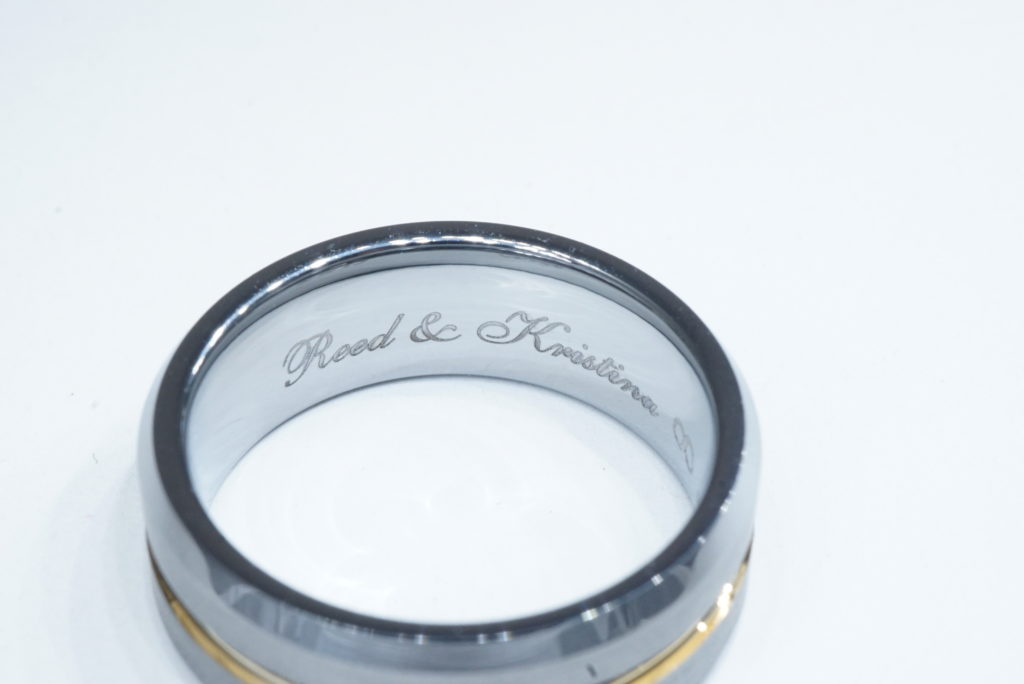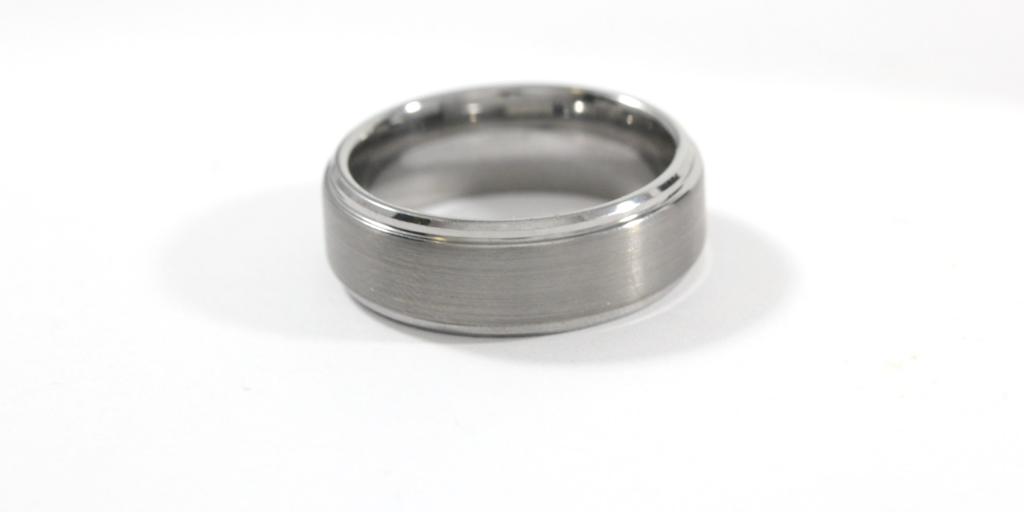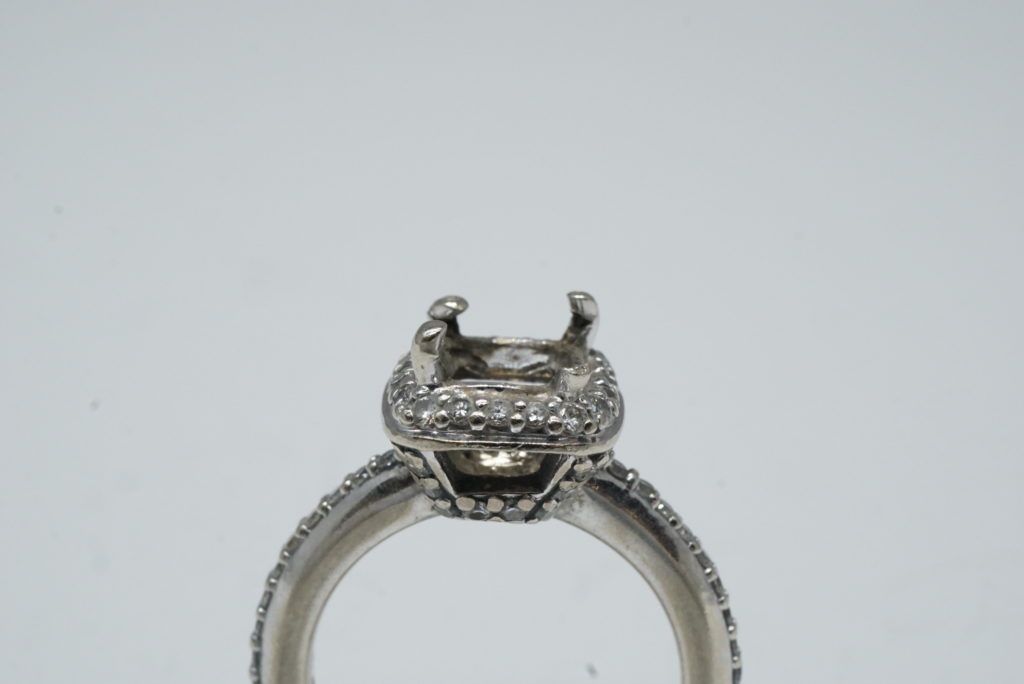How to Pick the Perfect Men’s Wedding Band
Written by Anna Currell
October 17, 2023

Are you getting married? Congratulations! Now’s the time to pick out the perfect wedding bands to commemorate your lifelong partnership. Your wedding band will be something you’ll likely wear every day, so it's important to choose something that fits your look and lifestyle. There’s usually a big focus on women’s engagement rings, but men deserve wedding bands they can love and cherish, too. In this article, we’ll walk you through everything you need to know to pick the ideal men’s wedding band for you.
Know Your Ring Size
The first step is to accurately determine your ring size. You want your men’s wedding band to slide on comfortably without being so loose that it falls off. You can calculate your ring size before you start shopping using a few simple tools that you probably already have at home: a piece of paper, a pen, and a ruler.
First, wrap the slip of paper around your finger. Use the pen to mark the paper where it folds back over itself. Then measure the distance between the edge of the paper and the pen mark to find the circumference of your finger. A ring sizing chart will help you translate your finger’s circumference into the correlating ring size. For example, if you have a 64.6 mm finger circumference, your ring size is 11.
If you need a hard-to-find or in-between size, visit a jeweler; they’ll be able to give you some pointers and will likely help you try on a few different rings to see which fit feels the best. If you end up with a ring that’s too small or too big for any reason, you can always get it resized to fit you perfectly.

Choose the Right Width
Men’s ring widths typically range from 4mm to 8mm. The current trend is for wider bands, measuring 6mm or more, to create a bold, masculine look. If you prefer something with a lower profile, go with a 4mm or 5mm band. No matter what, make sure the width of the wedding band feels comfortable on your finger.
Pick the Right Metal and Finish for You
Since most men’s wedding bands are solid metal, picking the right kind is perhaps the most important decision. When choosing a metal, take into account your lifestyle and jewelry preferences. For example, durability might be a top priority for you if you know you work with your hands often. In that case, a very strong metal like platinum would be a good choice. Similarly, the rest of your accessories should influence the metal you choose for your band. For example, are your favorite belt buckles gold or silver? Choose a wedding band that matches.
Generally speaking, classic yellow gold is a timeless option. White metals like white gold, platinum, and sterling silver have a more modern look. If you’re stuck or don’t have a particular preference, you can always choose the same metal as your partner’s ring — this can make for a cohesive pair.

The ring's finish, or the texture of the ring’s surface, also affects its look. A highly polished band has a shiny luster, while brushed metals appear matte. Satin finish rings have a subtle sheen that is less shiny than the polished finish but shinier than the brushed finish. There are also more intricate techniques like hammered finishes, which pattern the ring’s surface with many tiny dents, or a florentine finish, which etches lines in the ring to create a cross-hatched pattern.
Consider Embellishments
If you want to spice up a simple band with a little more creativity and personalization, consider adding small embellishments. Patterns like milgrain edges use tiny metal dots to provide texture to the perimeter of the ring. You could mix and match a few different finishes to create a contrasting design pattern, like a brushed ring in the middle of an otherwise polished band. Another option is to have a phrase or date engraved inside the band for a personal touch.
If you want to add gemstones, small accent diamonds or gems spaced intermittently across the band can add just a hint of sparkle. Keep in mind that gemstones will increase the price of your ring, sometimes significantly. For a budget-friendly alternative, go with inset lab-grown stones. For example, you can find lab-grown diamonds that are identical to naturally occurring diamonds but at a fraction of the cost.

Match Your Wedding Band to Your Lifestyle
Think about your job, hobbies, and daily activities when choosing a wedding band. Certain metals and finishes are better suited for active lifestyles. If you work with your hands frequently, go with tungsten or titanium to resist damage. You might want to opt for a brushed or hammered finish to more easily hide scratches and dings from everyday wear.
For a hint of color, black tungsten or cobalt chrome bands are bolder, darker metals. They’re also great scratch-resistant choices. If you want something entirely unconventional, consider alternative metals like silicone, ceramic, or wood. Depending on the design, these options can provide even more durability for hands-on hobbyists and athletic or outdoorsy types.

Stainless Steel Ring
Focus on Finding “The One”
No amount of measuring, research, or advice can take the place of that goosebumps moment when you try on the men’s wedding band that’s meant for you. Be sure to take your time trying on multiple styles to find the perfect fit in both size and style. The comfort level and excitement you feel when wearing your wedding band is ultimately what matters most. Can’t find the one you’re looking for? Design your dream men’s wedding band with our team of bespoke jewelry experts at Quick Jewelry Repairs.


